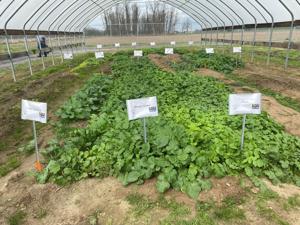
When the Southern Cover Crops Council held its annual conference recently in Baton Rouge, I was fortunate to sit in on panel discussions with farmers and specialty crops (vegetables, fruits, nuts and nursery crops) producers.
Cover cropping was once a common practice in agricultural history. But by the 1950s in the United States, it was largely abandoned as conventional agriculture relied solely on synthetic fertilizers.
Cover crops have been used throughout recorded history, with Greek and Roman farmers having used legume cover crops in their vineyards to improve the quality of the soil. Europeans in the 1700s used lupines to improve sandy soils, and in the 1800s, cover crops were commonly used by American farmers.
Today we are again seeing a rise in the use of cover cropping systems. What is a cover crop? A cover crop is grown for the protection and enrichment of the soil and planted between cash crops to prevent the loss of nutrients from the soil by water movement, to prevent soil erosion and to provide green manure.
Cover crops are typically fast-growing plants such as brassicas, forbs, grains, grasses and legumes and are planted in late summer or fall into empty or fallow (fallow is a farming technique where land is left idle for one or more seasons) garden beds.
The crops are used to renew soil health by adding organic matter back to the soil and thereby improving the overall soil structure and building the fertility of the soil.
Cover crops are often called “green manure,” as they create a living cover that helps maintain soil health until the next planting cycle. These crops act as a living mulch and protect soils from erosion. Some examples of commonly used cover crops are buckwheat, barley, clover, hemp, millet, mustard mixes, oats, radishes, rapeseed, rye, turnips, wheat and winter peas.
As planting cover crops continues to be a beneficial practice for regenerative agriculture and gardening, this technique can be utilized in even the smallest of gardens. In addition to improving soil fertility and reducing the amount of soil erosion and nutrient leaching, cover crops decrease compaction, reduce the number of weeds and improve water and air movement in the soil. They also help increase the activity of earthworms and beneficial microorganisms and provide habitat and food (nectar and pollen) for beneficial insects and pollinators.

Leave a Reply